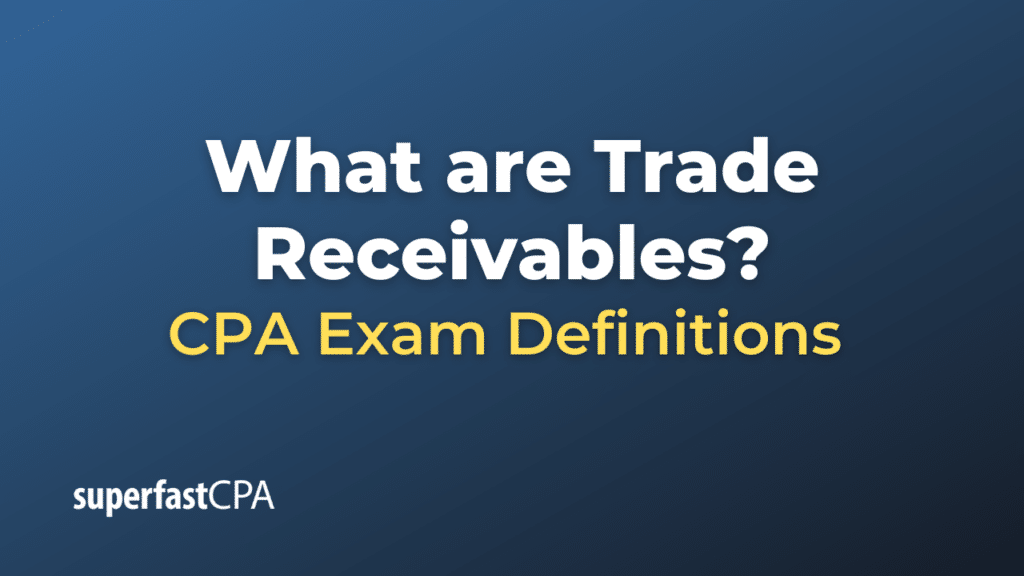Trade Receivables
“Trade receivables” are essentially the opposite of “trade payables.” While trade payables represent amounts a company owes to its suppliers for goods or services bought on credit, trade receivables represent amounts that customers owe to the company for goods or services sold on credit.
In other words, trade receivables are amounts of money due from customers to a business in the short term. They are an asset to the company because they represent future inflows of cash.
When a company sells goods or services to a customer on credit, it records:
- A debit (increase) to its “Trade Receivables” or “Accounts Receivable” account.
- A credit (increase) to its “Sales” account.
When the customer eventually pays the invoice:
- The company will debit (increase) its “Cash” account.
- The company will credit (decrease) its “Trade Receivables” or “Accounts Receivable” account.
Example of Trade Receivables
Let’s delve into a detailed example to illustrate the concept of trade receivables:
Scenario:
Imagine a business named “BookWise Publishing” that publishes and sells books to retailers. They make a sale of 1,000 copies of a particular book to a retailer named “Novel Ideas” on credit terms of 45 days. The total cost of the books is $10,000.
Accounting for the Sale:
When “BookWise Publishing” ships the books and sends the corresponding invoice to “Novel Ideas”:
- BookWise Publishing records the sale:
- Debit: Trade Receivables (or Accounts Receivable) $10,000
- Credit: Sales Revenue $10,000
This accounting entry means that “BookWise Publishing” recognizes it has made a sale (hence the credit to sales revenue) and acknowledges that “Novel Ideas” owes them $10,000 (the debit to trade receivables).
Receipt of the Payment:
45 days later, when “Novel Ideas” pays the invoice:
- BookWise Publishing records the receipt of payment:
- Debit: Cash $10,000
- Credit: Trade Receivables (or Accounts Receivable) $10,000
Now, “BookWise Publishing” has received the payment, so their cash has increased by $10,000. Simultaneously, the amount owed to them by “Novel Ideas” has been settled, reducing the trade receivables account by the same amount.
Summary:
- BookWise Publishing” initially recognizes a sale and acknowledges the amount due from “Novel Ideas” by recording a trade receivable.
- Once the payment is received after 45 days, the trade receivable is cleared, and the cash is increased by the corresponding amount.
In essence, “BookWise Publishing” provided “Novel Ideas” a short-term loan by allowing them to pay 45 days after the delivery of goods. This is a common practice in many industries to facilitate business operations, but it’s essential for companies to manage their receivables efficiently to maintain healthy cash flow.













